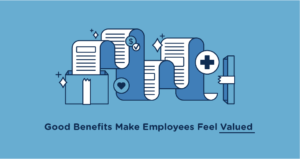According to Tom Sullivan, VP of small business policy at the U.S. Chamber of Commerce, small businesses struggle to recruit qualified staff and continue to bear the burden of worker shortages. The burger chain White Castle recently reached out to 550,000 past applicants from as far back as 2017 to try to fill open positions.
A poll conducted by the U.S. Chamber of Commerce and MetLife found that 24 percent of small businesses planned to increase pay to attract new employees. Other tactics include remote work, more flexible working hours, and better benefits.
A recent study by HR platform provider Ease examined the challenges facing small-to-medium businesses as the pandemic recedes. The study found that as employers sought to retain and recruit workers, they offered more voluntary benefits.
It’s not surprising that workers are interested in better benefits given the events of the past year. The looming possibility of serious illness, hospitalization, or fatality became painfully palpable for many workers. These threats motivated many to choose voluntary benefits during the 2021 open enrollment period to help protect their families and their income should they face more difficult circumstances in the future.
Health Costs are Increasing
The Ease study of small-to-medium businesses also noted an increase in medical plan premiums and medical costs overall during 2020. The average company in their study saw a year-over-year increase in individual medical premiums of nearly 6 percent, while family medical premiums increased almost 4 percent, on average.
The following health costs also saw an increase in 2020:
- Overall, health care prices rose nearly 2 percent.
- The cost of physician services increased nearly 2 percent.
- The cost of hospital services rose 3 percent.
The Cost of Turnover
Another expensive issue plaguing employers of all sizes is turnover. The costs of employee turnover vary depending upon the role and the nature of the business. Still, some studies estimate that each time a company replaces a salaried employee, it costs 6 to 9 months’ salary on average.
A CAP study found the following averages to replace an employee:
- Jobs earning less than $30,000 a year = 16 percent of annual salary
- Jobs earning $30,000 to $50,000 a year = 20 percent of annual salary
- Highly educated executive positions = 213 percent of annual salary
Improving benefits is also a way to reduce employee turnover, especially for small businesses.
A Cost-Effective Solution is Here
Attracting and retaining qualified talent is tricky, but offering benefits to make employees feel valued is significant. Small businesses often feel they can’t provide health benefits for their staff because insurance premiums and deductibles are cost-prohibitive. Add on the insurance claims that impact profits, and the cost of a meaningful health plan can quickly escalate beyond control.
Now there is a powerful alternative to traditional health insurance plans. It’s called direct primary care (DPC). Instead of paying monthly premiums or deductibles, this health membership offers unlimited visits to a primary care physician for a low monthly membership fee. The membership can be paired with an insurance policy or provided on its own.
DPC has been a game-changer for small businesses. This low-cost alternative allows employees of small companies and the service sector to get the healthcare necessary to keep themselves and their families healthy. When it comes to using health benefits as a recruitment strategy, direct primary care makes it easy. Employers don’t have to wait until open enrollment to implement DPC. They can sign up any time of year to offer health benefits to their staff.
If you’d like more information on how direct primary care can help employers stand out in a competitive landscape, contact Healthcare2U.








